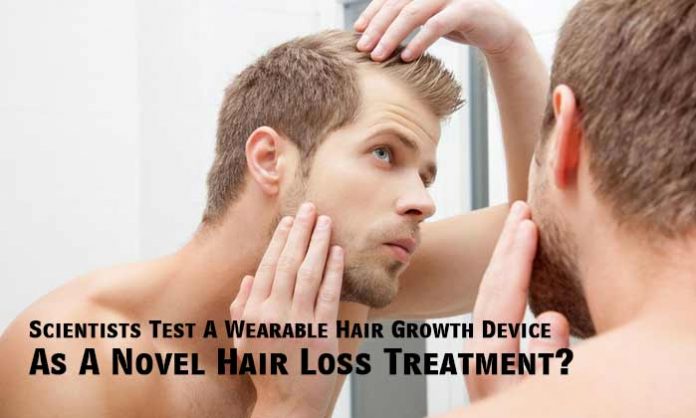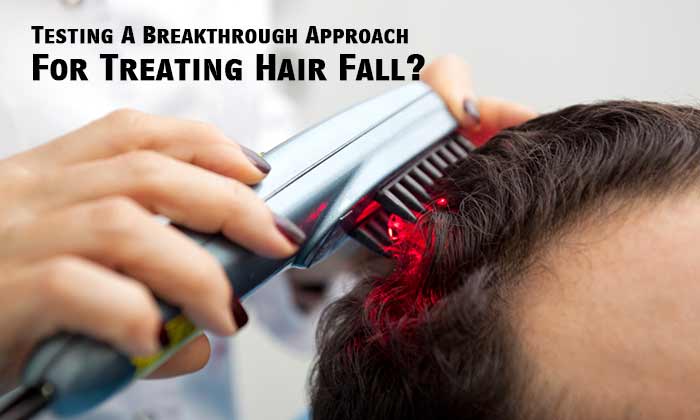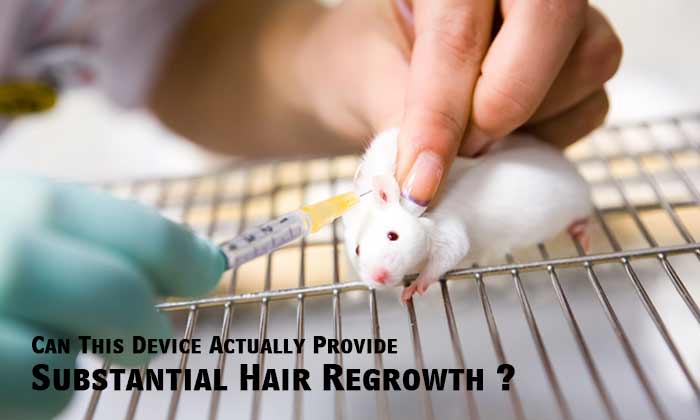
Finding an easier way of boosting hair regrowth still remains a major challenge for the scientists. A recently published paper claims that micro LEDs may be the answer we all have been looking for so long.
Hair loss is a condition which has significantly affected millions of people all over the world [1]. For some, this matter is of little or no concern, but many, it can considerably impact both their confidence and self-esteem. And, for all such people, finding a faster way to regrow their hair is very crucial.
A number of causes may result in significant hair fall. These might include prolonged stress, genetic factors, aging and extremely higher levels of male hormones.
Despite decades of dedicated studies, boosting an individual’s hair growth is a hit and miss, painful, expensive or everything stated before.
The currently available options for treating hair loss include a medication known as minoxidil (a common vasodilator), hair transplant surgery and corticosteroid injections.
Away from the pitfalls of drugs and surgery, some researchers are turning to the potential use of light. A new study investigates the possibility of a wearable, light-based solution to hair loss.
Testing A Breakthrough Approach For Treating Hair Fall

Earlier researches have already revealed that laser light might boost hair regrowth by stimulating the hair follicles, resulting in an amplified cell differentiation. Red light laser is especially successful as its wavelength can penetrate much deeper into the skin than the shorter wavelengths of blue and green light.
This laser is quite promising and doesn’t has any apparent adverse effects either, but the equipment required for this laser hair regrowth treatment is relatively large, expensive and a bit difficult to use; all of this makes it impractical for individual use and hence its availability is limited.
A breakthrough method was recently published in the journal named ACS Nano and describes a wearable, flexible device that uses micro light emitting diodes (also commonly known as micro LEDs). [2]
This breakthrough technology is now being tested for myriad of applications owing to its flexibility, durability and a convenient smaller size.
However, it is important to note that these micro LEDs have shortfalls too, according to researchers. These drawbacks include low optical efficiency, high heat radiation and a significantly high energy consumption. To avoid such issues, the scientists use ultra-thin array of these flexible micro LEDs.
This wearable hair regrowth device has been tested for the very first time on a living animal. The 900 micro LEDs were placed on a chip, which was just around the size of a postage stamp with approximate thickness of merely 20 millimeters.
In comparison to the classic laser treatment, this novel design uses around 1,000 times less energy every square millimeter. When used on animals, this patch didn’t produce substantial heat, and so, prevented the risk of burning the skin.
When the researchers stress-tested this patch by significantly flexing it around 10,000 times, it still remained intact and robust enough. This quality is indeed essential for anything that is meant to be worn on the human skin.
Can This Device Actually Provide Substantial Hair Regrowth ?

Besides its impressive performance, energy efficiency and safety, the most crucial question was whether this device could regrow hair as predicted.
The researchers then tested device’s ability to regrow hair on the backs (shaved) of mice, and compared the hair regrowth supported by the micro-LEDs patch against the mice, who didn’t receive any treatment (control) along with the mice, who were administered minoxidil injections.
As predicted, the mice who received the micro-LEDs patch treatment for around 15 minutes every day for 20 days, showcased the best results. Hair grew much faster and were also longer. The area of hair regrowth was considerably wider.
However, the human testing will be the true marker of this new device’s success. Nevertheless, a successful animal testing is still a major step ahead. The researchers have shown that a durable, small and flexible patch can be worn for short duration each day to significantly support a person’s hair regrowth.
The study authors believe that this novel technology may also have other applications in future, including wound healing, skin lightening and acne care.




